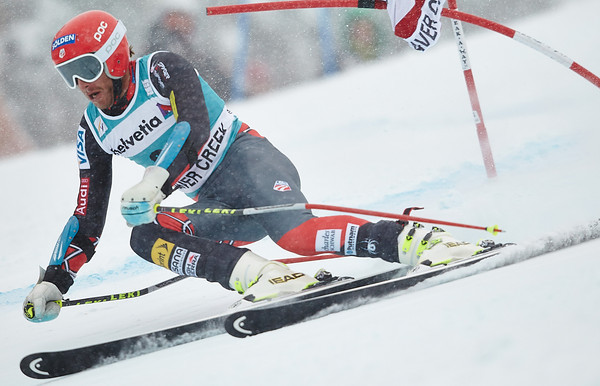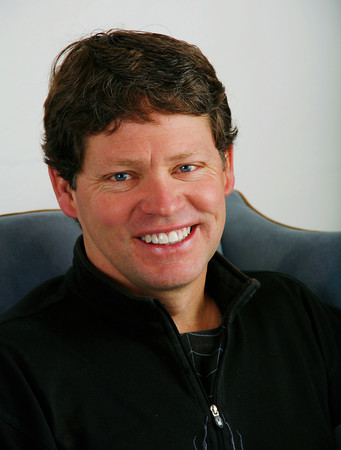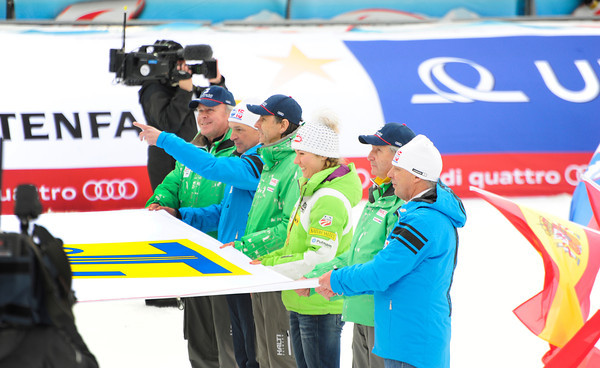Last season, after making an incredible late charge, Lindsey Vonn lost out at a chance at her fourth straight overall World Cup title by a measly three points, in part because of bad weather on the very last day. She said at the time she was "devastated."
This season, Lindsey has skied with unmistakable passion, and that emotion has been further channeled by everything going on behind the scenes in her personal life, including the split early in the season from her husband, Thomas, and a reconciliation with her father, Alan Kildow.
When she skis, Lindsey has said, she is "very clear-minded," on her game like never before -- bluntly, like very few athletes, American or otherwise, in any sport, have been in any season.
Racing Friday in Are, Sweden, Lindsey won a World Cup giant slalom.
It was her 11th victory of the season, and 52nd of her career. It locked up the 2012 overall World Cup title -- obviously, her fourth in five years.

"I don't know what to say. I just wanted to have two really aggressive runs today," Lindsey said at the bottom of the hill, her U.S. teammates cheering.
"I have nothing to lose. I'm just having fun. My sister is here," younger sister Laura. "My teammates are so cool, cheering me on in the finish."
She added, "I am just really excited."
Some facts and figures, and keep in mind two things. These numbers and statistics can only suggest how dominant Lindsey has been. And the season is not yet over:
Lindsey's four World Cup overall titles are the most by an American skier. Phil Mahre had three.
The most-ever? Austria's Annemarie Moser-Pröll, with six, won in the 1970s. Lindsey, with those four, is now alone in second place. Croatia's Janica Kostelic, Switzerland's Vreni Schneider and Austria's Petra Kronberger had three apiece.
The 52 career victories leave her only 10 behind Moser-Pröll. Lindsey got to 50, in early February, faster than any female racer in history. Lindsey's first win came on Dec. 3, 2004, a downhill in Lake Louise, Canada.
The 11 victories this season match the U.S. record Lindsey set two seasons ago.
For the season, Lindsey now has 1,808 World Cup points. That's an American record.
Lindsey had 1,788 points when she won the 2009 overall.
In second place in the 2012 overall standings: Tina Maze of Slovenia, with 1,254 points. That's a 554-point lead. Again, and for emphasis: Lindsey lost last year, to her friend Maria Riesch of Germany, by three.
There are five races left on the World Cup calendar.
No female racer has reached 2,000. In 2006, Kostelic reached 1,970 points. In 1997, Sweden's Pernilla Wiberg got to 1,960.
On the men's side, Austria's Hermann Maier reached exactly 2,000 points in -- there was a nice symmetry here -- in 2000.
You bet Lindsey has noticed she is within striking distance of 2,000.
In prior seasons, she said in a conference call later Friday with American reporters, 2k had never seemed possible. "Trying to beat the 2,000-point barrier is something extremely significant. This opportunity may never happen in my career again," she said, adding a moment later, "I'm going to fight in every race until the end."
Indeed, she said, that's what this entire season has been about -- seizing focus, opportunity and momentum and not letting go.
She said she was "disappointed" to have lost last year by three, wanted "to come out this season starting strong and keep the momentum going," and "then the problems in my personal life … have made me a little more focused."
Last year, she said, taught her "to seize every opportunity, to put everything on the line," in every race.
Moreover, skiing has been a source of stability and solace. Racing, and in particular this season, has been a complete release from everything else.
She said, "I mean, I have had a lot of difficult times in my life, just with injuries and family issues," a reference to the arc of her entire career. "But, you know, skiing is always the constant in my life and I can always rely on it."
The 2012 overall title is the 15th of Lindsey's career and the third of this season; she had previously clinched the downhill and super-combined.

The giant slalom that Lindsey won Friday? That was the second giant slalom victory of her career, both this season, testament to the men's skis she switched to this year and the ferocious workouts she did last summer after coming up those three points shy last March.
Men's skis are longer and more rigid. To control them, Lindsey had to be in distinctly better shape. The advantage of using those longer, stiffer skis is that they enable Lindsey to ski a straighter line. A straighter line means she can, in essence, go faster. Thus: new success this season in the giant slalom.
The first giant slalom victory kick-started the season -- in the very first race, last October, in Soelden, Austria.
On Friday, in flat light and in bumpy, slushy conditions, Lindsey held a lead of seven-hundredths of a second after the first run. That marked the first time in her career Lindsey had ever held a first-run lead in giant slalom.
"I didn't want to let this opportunity pass me by," she said later. "I knew I could win but I still wanted to risk everything. I knew I had to risk everything."
So she really turned it on, leading at every interval to extend her winning margin to 48-hundredths of a second.
Federica Brignone of Italy, the giant slalom world championships silver medalist, came in second; Viktoria Rebensburg of Germany, who won both GS races last weekend in Ofterschwang, finished third, 1.05 seconds back.
Two other Americans finished in the top-15: 28th birthday girl Julia Mancuso, eighth, Resi Stiegler, continuing her late-season surge, 13th.
"I am thrilled," Lindsey said, excited and breathing hard, in the finish area.
Asked if she was going to be taking time off to celebrate, she said, jokingly, "I wish."
No one wishes. Of course the calendar will turn soon enough to spring. And even all great things have to come to an end.
But there are still five races to go.











